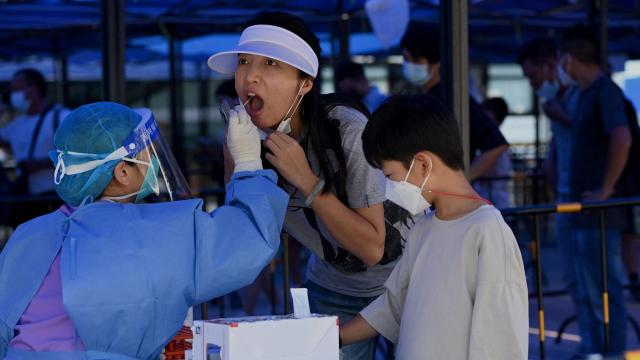China reported no new locally acquired cases of covid-19 on Friday, according to China’s National Health Commission, the fourth day in a row that zero cases of community transmission have been detected on the mainland. The country reported 22 new covid-19 cases from people entering the country, all currently in quarantine. China last saw a case of community transmission of the virus on Monday when a single case was detected.
Covid-19 originated in China at some point in late 2019, but the country has been able to maintain a strategy known as “covid-zero” longer than almost anywhere on the planet. China currently has 516 active cases of covid-19, all in managed isolation.
There’s one obvious question for people sceptical of China’s ruling authoritarian regime: How accurate are China’s covid-19 numbers, and is it really possible for a country of 1.4 billion to be living without covid-19 right now? The answer appears to be that it really is possible, though China’s luck may eventually run out.
As recently as a few months ago, there were six countries along with China in the covid-zero club, meaning they were trying to eliminate rather than merely suppress the virus: New Zealand, Singapore, Vietnam, Australia, Hong Kong, and Taiwan. But every one of those countries, aside from Hong Kong, Taiwan, and China, have since given up on the dream of eliminating the delta strain.
Countries that has successfully maintained close to zero cases has done so through extensive testing, contact tracing, and isolating anyone who’s potentially been infected. Successful countries have also employed strong testing regimes at international borders, and sometimes set up checkpoints when people have crossed local borders, as they have in Australia.
But the one thing that’s set China apart from the rest of the world has been mass testing for covid-19 when mystery cases arise. The strategy differs from individual tests in that often large numbers of tests are all thrown together in one batch, saving money and resources on expensive reagents. Then, if a large batch returns a positive test, health care workers are able to test everyone in that batch individually and narrow down who in the group may be infected with covid-19.
When Wuhan, China saw mystery cases of covid-19 in May of 2020, health authorities tested almost all of the city’s 11 million people in just a few weeks using the mass testing method. The city went into lockdown and while the lockdowns were draconian, the system worked and Wuhan was able to become covid-free again.
China has done this repeatedly, like in the city of Nanjing, where 8.7 million of the city’s 9.3 million people were tested using the mass testing method in July, according to state media outlet CTGN. People who tested positive were isolated and the city became covid-free again.
As recently as two weeks ago the northern city of Harbin went into partial lockdown after dozens of covid-19 cases were detected there. Citywide testing was initiated and everyone who tested positive was quarantined.
China has an oppressive regime that has regularly violated human rights, most notably in Xinjang, where the Muslim-majority Uighurs have been placed into camps and tortured. And there are many reasons not to trust the Chinese Communist Party on any number of issues. But when it comes to covid-19, they may have figured out how to keep numbers extremely low — bordering on zero.
How long can they keep it up? No one knows for sure. But if a small country of five million like New Zealand can’t do it, China may find it difficult to maintain covid-zero indefinitely with a much larger population. Then again, New Zealand never tried mass testing. And China’s vaccination rate is much higher than New Zealand.
China has vaccinated 74.97% of its population against covid-19, according to Johns Hopkins University. New Zealand has vaccinated just 45.16%.
